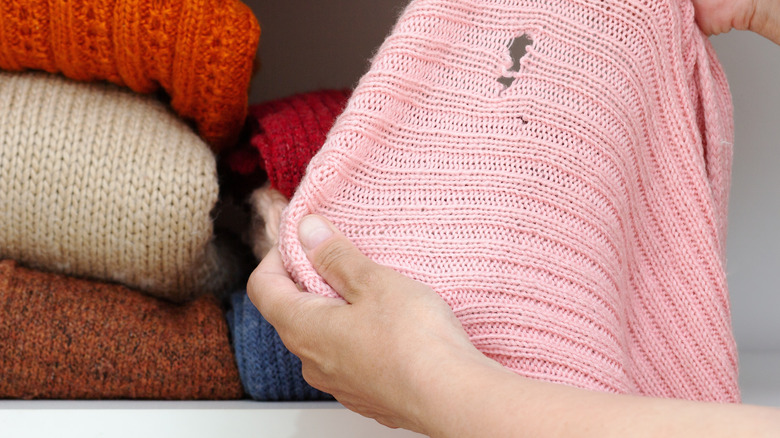Pantry Vs Clothes Moths: Which Pest Are You Really Dealing With? Here's How To Tell
If you're spotting tiny moths flying around in your home, you might suspect you have either pantry or clothes moths. Although there are other types of tiny flying insects that can end up in the home, when moths show up in the fall or winter, you can be pretty sure it's one of those two indoor pests. Although it may be really difficult for most people to see with the naked eye the difference between these two, you should be able to tell which moth is in your home by which room they are in and any damage they may have caused. It's important to know which pest you have so that you can choose the right method for dealing with them.
Clothes and pantry moths are both types of bugs you don't want living in your home. When trying to tell them apart, there are some visual distinctions you can look for. While pantry moths are about a half an inch long, clothes moths are only half that size and have tufts of hair on their heads. However, since these pests are both so small, it can be difficult to tell which type you really have just by looking at them. It's much easier to distinguish between these two tiny insects by looking for damage to the clothing in your closet, and infestations in the foods in your pantry or kitchen cabinets.
Inspect food packages and clothes to learn which moths you have
Meal or pantry moths feed on a wide variety of dried goods such as crackers, nuts, and flours. If you see moths in the kitchen, that tells you they're the kind that will infest your dry foods. Look for them on your ceiling, and on or in your cabinets. Check dry goods really well — including unopened packages – for small caterpillars, exoskeletons, and webbing. Another sign of this pest is clumped-up food inside of packages. Once you determine these pests have taken up residence in your kitchen cabinets, the best way to deal with pantry moths includes disposing of any items that are infested.
To determine if the type that eat clothing fibers have infested your home, look for the telltale signs that moths have gotten into your belongings. Clothes moths are really well-known for leaving little holes in wool sweaters. In addition to holes, you may find fecal matter and cocoons. But wool isn't the only animal fiber these pests like to chew up. Clothes moth larvae also eat leather, fur, bristles, and feathers. That means you may need to check clothing, handbags, shoes, rugs, pillows, comforters, hairbrushes, and upholstered furniture for damage. However, usually the affected items are in storage or other dark areas since unlike pantry moths, the caterpillars that eat wool hide from light. You can deal with them by exposing affected items to sunlight, which can help rid the item of larvae.

